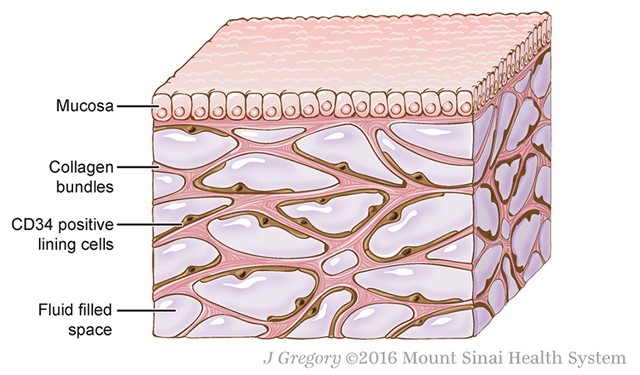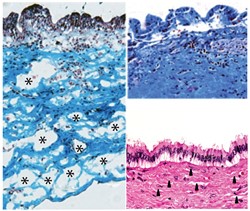Introduction: On March 27th, Scientific Journals published an interesting article revealing a structure that has long been missed by traditional anatomy - the interstitium. Because it is widely present throughout the body and involved in many kinds of biology. The process was first defined by scientists as "new organs."

The article entitled "Structure and Distribution of an Unrecognized Interstitium in Human Tissues" was completed by scientists at New York University. They found that there is a liquid-filled grid space structure in the submucosa, interstitium, made of collagen fiber bundles. Parcels made of interstitial fluid.
The discovery of this structure subverts the view of "dense connective tissue" considered by traditional anatomy. In general, the pathology study will chemically process the collected living tissue so that it can be “fixed” and observed under a microscope to analyze the body composition.
The team believes that interstitium is a widely-occurring organ that is associated with the lymphatic system and may be involved in cancer metastasis.
New Organ?
Neil Theise, a professor of pathology at New York University, and the team used a new technique, probe-based laser confocal microscopy (pCLE) to allow real-time observation of living tissue at high resolution during endoscopy. . The study recruited 12 cancer patients who will undergo surgical resection of bile ducts and pancreas tissue. Before resection, the researchers used pCLE technology to observe the bile duct tissue in real time.
Surprisingly, they only observed dense connective tissue in fixed bile duct sections, but living tissue imaging showed a spatial structure containing fluids, known as Interstitium. In addition, the removal of the liquid will cause the Interstitium's protein network to "collapse." This may explain why there is no interstitial in a fixed sample.
More importantly, in addition to bile ducts, Interstitium is widely distributed throughout the body, including the submucosa of almost all organs and tissues, including the dermis, gastrointestinal tract, lungs, urinary system, and blood vessels.

Functions:
Interstitium is a liquid-filled, grid-like spatial structure. Among them, the grid consists of collagen bundles, and the entrapped fluid is called interstitial fluid. In addition, flat cells carrying two markers are irregularly arranged on the protein bundle.
Interstitium can act like a shock absorber to protect tissues, muscles, and blood vessels from being pulled during daily work. Studies have found that interstitials are a source of lymph. In addition, the interstitial changes with age, may be related to skin wrinkles, stiff limbs, fibrosis, inflammatory diseases, and the like. The researchers speculate that these cells are likely to be mesenchymal stem cells. In addition, interstitial proteins may produce electrical currents accompanied by the movement of tissues and organs, which may play a role similar to acupuncture.
More importantly, because of the liquid's fluidity, this structure may explain why the cancer cells that invade it are more likely to spread.

Arguments
However, this bold conclusion has not been unanimously approved. Some scholars believe that interstitium may play an important role in the body, but it should not be classified as an organ. Moreover, this study is limited to a small number of patients.
"Histologists and pathologists have known for a long time that there are liquid-containing gaps between tissues.” Anirban Maitra, pathologist at the MD Anderson Cancer Center at the University of Texas, believes that interstitium has been classified as the largest organ that has not yet been discovered. Comparatively far-fetched. According to this definition, the abdominal cavity and pleural cavity should also be called organs.
Science has never stood still. The existence, function, and controversy of interstitium may be answered in more studies.
References:
Is the Interstitium Really a New Organ?
Newfound 'organ' had been missed by standard method for visualizing anatomy
Souce: NovoPro 2018-03-31
